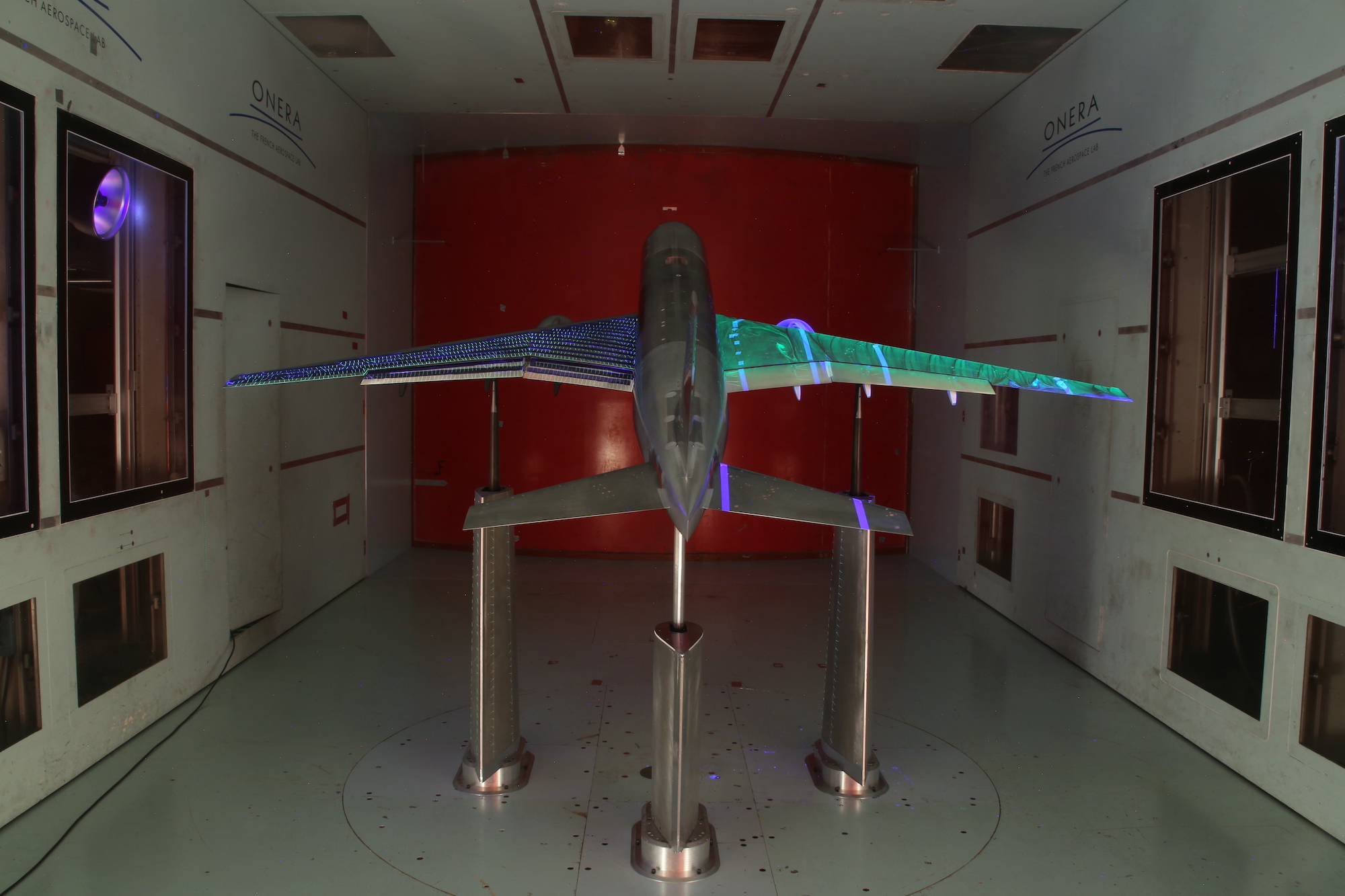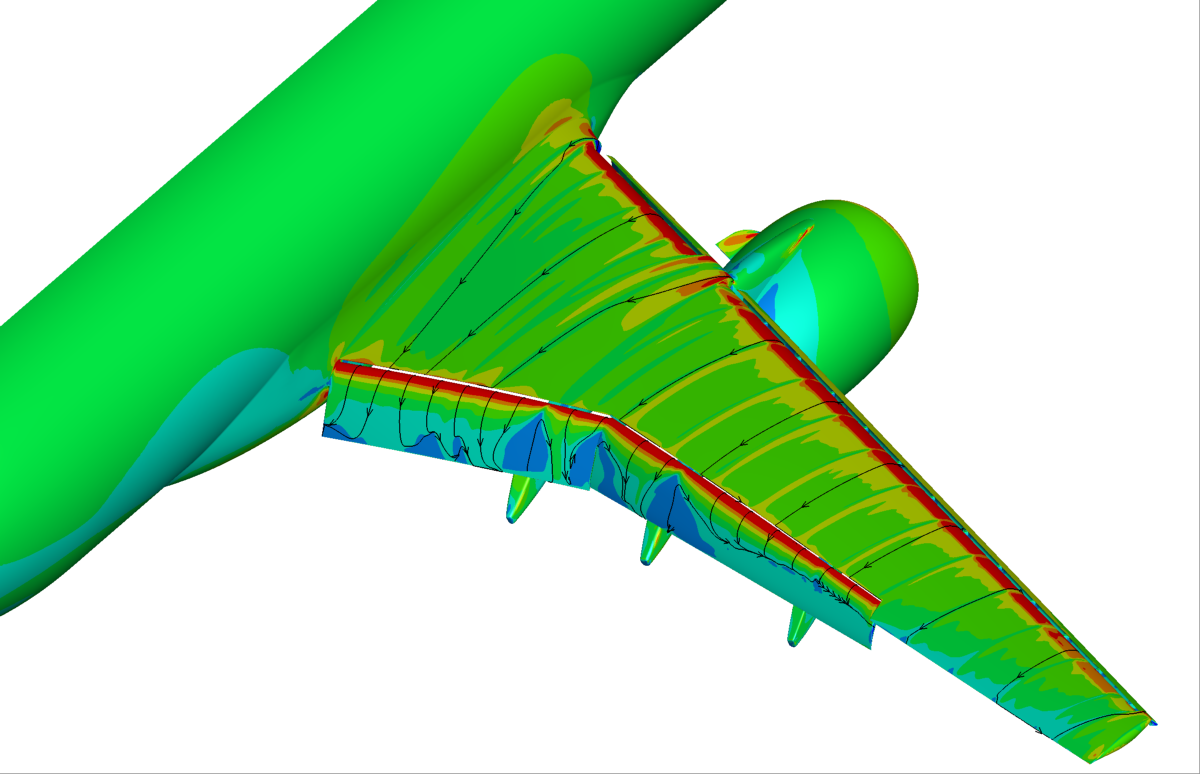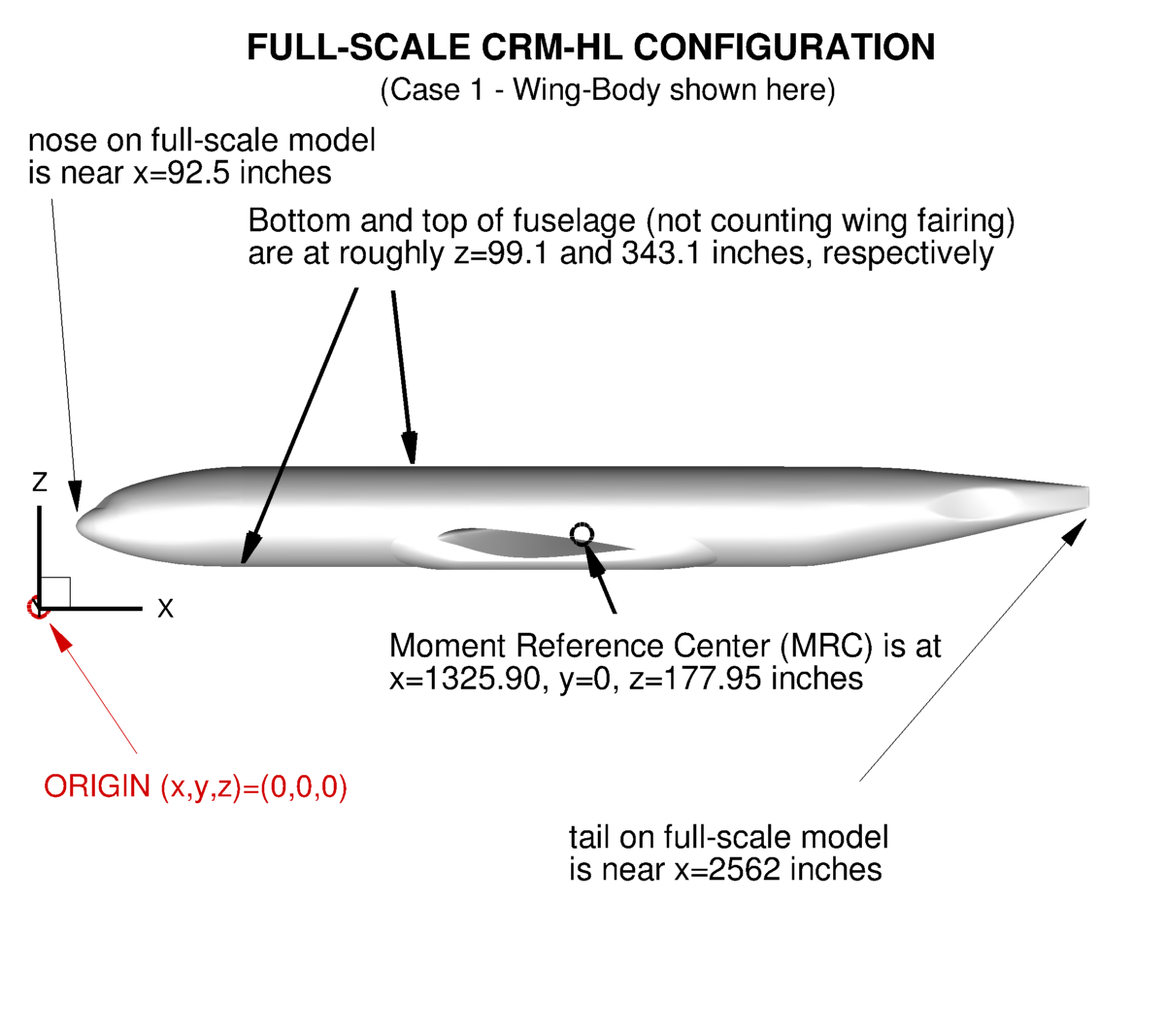
FREQUENTLY ASKED QUESTIONS
5th
AIAA CFD High Lift Prediction Workshop
Q1: Why are HLPW-4 and HLPW-5 being conducted differently than previous
high-lift workshops?
A1: Bottom line: to try to get more
out of the workshops. In an attempt to accelerate the
rate of progress, and to take better advantage of the collective brain-power focused on
enhancing CFD prediction capability for practical high-lift aerodynamics,
the committee decided to try something new for HLPW-4. Rather than working individually,
active participants were asked to join one or more Technology Focus Groups during the months leading
up to the workshop.
The new way of operating HLPW-4 worked extremely well, so we are continuing the practice with HLPW-5.
As a side note, starting with HLPW-4 we changed the workshop acronym from HiLiftPW to HLPW.
However, the workshop's website name still uses "hiliftpw".
Q2: What are Technology Focus Groups, and how do they work?
A2: A Technology Focus Group (TFG)
is made up of ACTIVE PARTICIPANTS working (remotely) together in a specific area, to try to answer questions related to
CFD prediction of high-lift flows.
Each member of a TFG contributes to team activities, as delineated by the TFG leaders.
These activities likely involve performing CFD or meshing work, and sharing it with the TFG team.
(It is possible that each TFG may be conducted somewhat differently.)
At the HLPW-5 workshop itself, each TFG will present a summary of its results.
In summary:
- The work is now part of a broader team's collective efforts.
- Rather than reporting results individually at the workshop, active participants are interacting
regularly with their TFG, and sharing their results with the TFG in the months prior to the workshop.
Individual active participants are no
longer responsible for making a presentation at the workshop.
- Instead, the TFGs are responsible for summarizing their collective results and presenting them at the workshop.
Q3: How can I attend the workshop if I am not presenting
my own work in an individual presentation?
A3: It is hoped that organizations will
still encourage their employees to attend
the workshop in order to see all of the TFG summaries,
and to actively participate in the workshop discussions.
Q4: Do I have to join a TFG to attend HLPW-5?
A4: No. If you are not a member of a TFG,
then your status is OBSERVER. Observers are free to run
the test cases, use the grids, etc. But their results will not be included in the collective
summaries presented at the workshop. Observers can also do nothing - just observe, because they are interested.
Like everyone else, observers can attend the TFG meetings and/or the HLPW-5 workshop and join in the discussions
there. In other words: Anyone, including active participants and observers, may attend HLPW-5
(subject to possible space availability/restrictions).
Q5: What do I need to do to attend the workshop?
A5: To attend the workshop, both active participants
and observers must register for HLPW-5 with AIAA.
AIAA will also give details regarding travel and accomodations, visas, etc. Note that registering for the
AIAA Aviation conference alone
does not give you access to HLPW-5 (and vice versa). You must specifically register for HLPW-5,
and pay its additional registration fee.
Q6: How is COVID-19 affecting HLPW-5?
A6: No impact is expected at this time, and
it is anticipated that the workshop will be held IN PERSON only.
Q7: What happened at the first four high-lift prediction
workshops?
A7: The first HiLift workshop took place in June 2010. See
Webpage for HiLiftPW-1 for detailed information. The second HiLift workshop took place in June 2013. See
Webpage for HiLiftPW-2 for detailed information. The third HiLift workshop took place in June 2017. See
Webpage for HiLiftPW-3 for detailed information. The fourth HiLift workshop took place in January 2022. See
Webpage for HLPW-4 for detailed information.
Q8: By what date will CFD results need to be completed?
A8: For HLPW-5, there are 3 test cases that
are being tackled by the TFGs sequentially, and several virtual meetings will likely be held prior to the final workshop
in order to discuss the results and progress. Tentative dates are listed on the home page
(HLPW-5 home page). Each TFG will likely define its own internal deadlines
as well. Participants should also have an opportunity to refine their computations prior to the final
deadline for HLPW-5.
Q9: What should I do if I find "problem areas" in
the geometry files?
A9:
If you encounter any problems/issues as you build grids using the geometry files, please make your own
fixes, DOCUMENT everything done, and plan to share your fixes with your TFG.
Note that the geometry includes regions that may be very difficult to grid (and possibly solve),
including very thin gaps at the bottom/inside edge of the slats. These were present in the
wind tunnel configuration, so they were left in. It is up to you how to handle such areas;
this is part of the challenge of the workshop. Again, be sure to document every
assumption/change/fix that you make, as your grids are created.
Q10: It is confusing that the test
cases use full-scale geometry yet wind-tunnel-scale Reynolds number (Re).
How do I reconcile this, and how do I set Re if my code does not have Re as an input?
A10:
It is particularly important that you set conditions to match the prescribed Reynolds number (Re)
and Mach number of the test cases. These two parameters uniquely define the flow conditions.
If your CFD code does not take Re as an input, then (preferably) kinematic viscosity
should be adjusted in order to achieve the precise Re requested in the Test Cases Document.
The Re in the three HLPW-5 test cases vary (they are all based on mean aerodynamic chord (MAC)).
The MAC is 275.8 inches (full scale).
As a specific example, say that you want to run ReMAC=5,600,000 on a grid created in full-scale inches.
In this case, the Re per inch should come out
to ReMAC/275.8 = 20,304.5685.
Q11: Where can I find gridding guidelines for making my own
meshes?
A11:
We have decided to forgo specific recommendations for meshing in HLPW-5. The reason for this is that the workshop
includes many different methodologies, each of which has very different meshing requirements. Therefore, each TFG
is taking the responsibility for determining its own "best practices" for creating meshes and families of meshes.
For those participants performing fixed-grid
RANS, the meshing guidelines from past workshops can provide some guidance if needed. See:
https://hiliftpw.larc.nasa.gov/Workshop3/GriddingGuidelines-HiLiftPW3-v10.pdf
and
https://hiliftpw.larc.nasa.gov/Workshop4/Mesh-Generation-Guidelines-V11-3-Final.pdf.
Q12: Please describe how to obtain lift coefficient
(CL), drag coefficient (CD), and pitching moment coefficient (CMy).
A12: Lift coefficient is defined
as L/(qS), where L is the sum of the components of the pressure forces and viscous forces on
all parts of the vehicle in the UP
direction, taking into account the angle-of-attack.
S is the reference area of the semi-span model (Sref/2).
The q=dynamic pressure=0.5*rho_inf*U_inf2.
Similarly, drag coefficient is defined
as D/(qS), where D is the sum of the components of the pressure forces and viscous forces on
all parts of the vehicle in the DOWNSTREAM
direction, taking into account the angle-of-attack.
Moment coefficient is defined as M/(qSc). Here, M is the moment about the moment reference
center (MRC), and c is the mean aerodynamic chord (MAC). This workshop is
asking for pitching moment coefficient, which is taken about the y-axis pointing out of the MRC.
To get M, you need to sum up all of the local forces (pressure forces and viscous forces)
times their moment arm about the MRC's y-axis.
By convention, CMy is positive when it acts to pitch the aircraft nose UP.
When computing the model in the wind tunnel, the model's standoff should not contribute to the
computation of CL, CD, or CMy.
The MAC, reference area (Sref/2), and MRC location are provided on the
Geometry Files page.
Note that the MRC is with respect to the particular coordinate system in which the geometry is provided
(full-scale, in inches, with origin in front of and below the model nose). Y=0 is on the model's centerplane.
Q13: What is a PID and how do I use it?
A13: A PID is a Participant IDentification
designation. It is the way we identify the submitted data for the workshop.
PIDs will be assigned to each participant and/or team.
Q14: I tried to use the provided
grids, but my solver would not work with them. Can I make modifications to these grids?
A14:
Yes. Just as mentioned in A9 above, be sure to DOCUMENT everything done, and plan to share your
changes and experiences with your TFG.
Q15: In what formats are the
grids provided?
A15:
A variety of different formats are used, depending on the person who created the grid and
the needs of the intended TFG that will primarily make use them.
Typical formats in the past have been CGNS (.cgns) and AFLR3 (.ugrid).
Most organizations have the ability to read at least one of these formats.
CGNS files are self-contained, whereas AFLR3 files include separate mapbc files.
Q16: Can/should I submit an AIAA paper on my
HLPW-5 related work for a future AIAA meeting?
A16:
Participants are free to publish/show their own results any way and at any time that they want.
However, regarding AIAA papers,
the HLPW committee prefers that participants wait until they hear about the opportunity to
participate in HLPW special sessions, likely to be held at one of the conferences after
the workshop (after 08/2024). The reason for this is so that related papers are grouped
together, resulting in more cohesive workshop documentation.
Q17: Do the geometry or grids include angle of attack?
A17:
For free-air, no. The geometry and all free-air grids are provided with the CRM-HL aligned with the x-direction, corresponding to
angle of attack of zero degrees. Furthermore, extraction of CFD data is all specified with respect to the unrotated
full-scale model. To run in free air at an angle of attack, the freestream flow needs to be
rotated, as per typical CFD procedure. If used, in-tunnel geometries are to be assembled yourself. Any provided in-tunnel
grids should have the model rotated appropriately with respect to the tunnel walls.
Q18: Are there rules for using data from this website?
A18:
All data (including images) provided on this website are publicly available and can be used freely, subject to rules and
limitations established for NASA websites (which generally states that any information
must be used in a factual manner, not manipulated or altered, and not used in any way that implies endorsement).
Appropriate credit should always be given when showing or publishing material produced by other authors.
This includes use of the experimental data provided on this website by the workshop committee. For example, use of ONERA or
NASA experimental data should be credited to those organizations.
Return to: High Lift Prediction Workshop Home Page
Recent significant updates:
05/22/2023 - Added Q17/A17; added picture to A12
01/11/2024 - Added Q18/A18
Privacy Act Statement
Accessibility Statement
Responsible NASA Official:
Li Wang
Page Curator:
Li Wang
Last Updated: 01/11/2024



